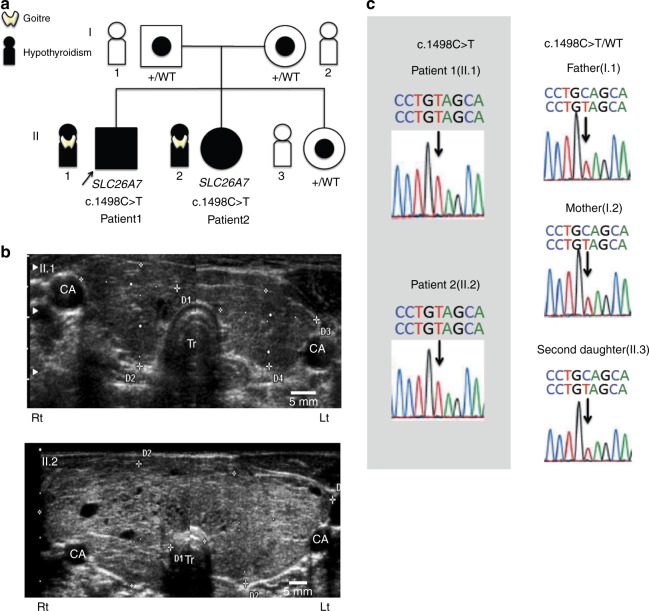Fig. 4.
Homozygous mutations in SLC26A7 cause goitrous hypothyroidism. a Family pedigree. Affected patients carry a homozygous nonsense mutation in the SLC26A7 gene. All other unaffected family members have a heterozygous mutation. Squares, males; circles, females; filled symbols, affected individuals; target symbols, carrier; arrow, the proband. b Thyroid ultrasonography of affected patients. The upper photo (II.1) represents patient 1 at 7 years of age when the LT4 treatment was resumed. The thyroid gland is slightly enlarged with a right lobe width of 19.2 mm (7.5–15.7) and a thickness of 16.5 mm (6.1–12.9), and a left lobe width of 19.2 mm (7.9–15.1) and thickness of 12.4 mm (5.3–11.4). The reference range for the corresponding age is shown in parentheses. The lower photo (II.2) represents patient 2 at 5 years of age when the diagnosis was made. The thyroid gland is markedly enlarged with heterogeneous inner echo signals defining adenomatous goitre. The right lobe width is 38.9 mm (6.9–13.7) and the thickness is 27.7 mm (5.8–12.0), while the left lobe width is 37.1 mm (7.0–13.4) and the thickness is 22.4 mm (5.0–11.1). CA, common carotid artery; Tr, Trachea; Rt, right; Lt, left. c Sanger sequencing results of SLC26A7 in family members. Note that affected patients show a homozygous C > T substitution (c.1498 C > T) while other family members show a heterozygous substitution

